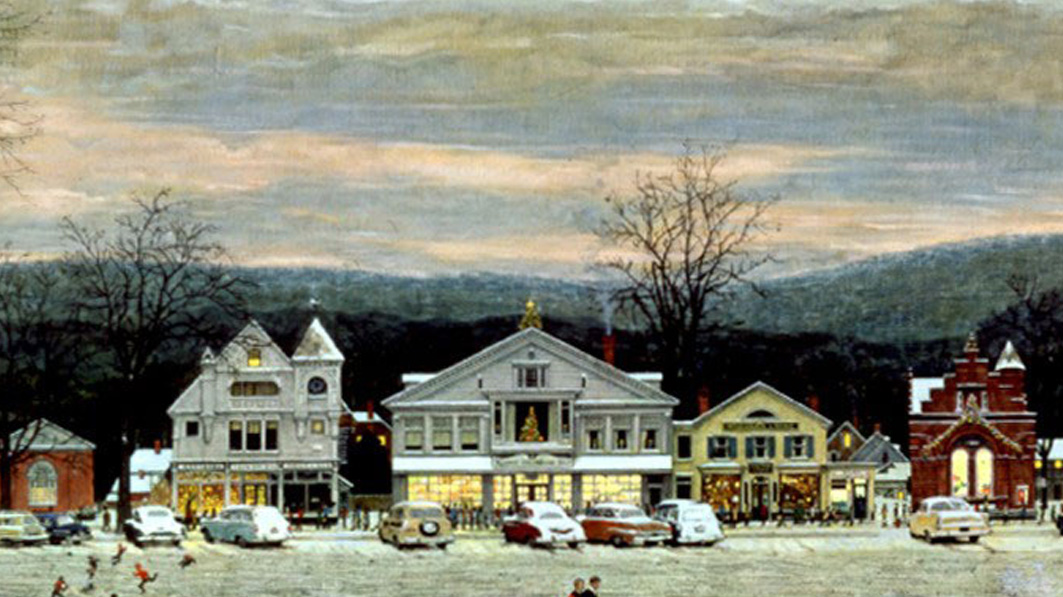“Home is where one starts from. As we grow older
The world becomes stranger, the pattern more complicated
Of dead and living. Not the intense moment
Isolated, with no before and after,
But a lifetime burning in every moment “ – T.S. Eliot
Each year, usually just before Thanksgiving, the Christmas catalog from the Metropolitan Museum of Art in New York arrives in my post box. It is the one seasonal catalog I look forward to receiving.
I turn immediately to the high gloss pages with the selection of Christmas cards, usually excerpted from the Old Master paintings in the Met’s peerless collection. Raphael, Botticelli, Michaelangelo: From the paintings of these matchless artists flow beautiful Christmas cards that are a mini-feast for the eyes and soul. Over the years, I have saved some of the Met cards mailed to my family and me because of the cards’ timeless elegance and simple grandeur.
In their own way, these special treasures, sent from family and friends to wish us good tidings, seem to touch the face of God.
What a joy to receive one of these gems, often with a scene from Christ’s nativity: A shepherd boy with his lamb; an angel singing glory to God in the highest; lowly Mary with Babe in arms; three kings who seem to feel less sovereign in the presence of Jesus; a star shining in the East; quietude, calm, and perfect stillness.
This year, another card from the catalog struck my attention, taken not from one of the Italian or Renaissance master paintings but rather from a great American artist who is rarely mentioned in the same breath as a da Vinci or Michaelangelo: Norman Rockwell. I have long been a fan of Rockwell’s, and spent several hours at a famous exhibition of his work at the Smithsonian just a few years ago. I had visited his studio and museum in Massachusetts in the late 90s.
For years, Rockwell was dismissed as a mere illustrator; but when one looks at his paintings more closely, and really attempts to see what Rockwell was trying to convey on his canvasses, it doesn’t take long to conclude that Rockwell deserves to be in a kind of American pantheon of 20th century American painters of distinction.
This year, the Met is featuring a Christmas card taken from one of Rockwell’s most indelible, iconic paintings “Stockbridge Main Street at Christmas.” This painting was used to illustrate a McCall’s magazine article “Home for Christmas” in 1967. It is a masterful evocation of everything that is best about home, community, neighborhood, family, and belonging during the Christmas season. If this painting were a movie, it would be a combination of It’s a Wonderful Life and Miracle on 34th Street.
The painting depicts the way a small town in Western Massachusetts is preparing for imminent Christmas, and features seven buildings that comprise the civil life of a typical New England village, all bathed in snow and animated by the low Berkshire Mountains in the background — framing a glorious and simple scene of cohesion, stability, and the kind of orderliness that makes life worth living. The painting is granitic and Yankee-infused in its texture; you could imagine Jimmy Stewart or Tom Hanks walking down the street with a Christmas package under his arm. The perceived coldness is part of its charm.
So are the people, here and there, who comprise the lower frame of the painting: they are bustling down Main Street in preparation for the holiday, but the dynamic of the painting is not infused with the same frenetic pace of holiday–Manhattan or Washington or Boston. These people don’t canter from place to place; they bear, in their persons, the confidence of the best of America: over there, two children with sleds; there in the middle, a husband and wife dressed in their fine holiday attire looking like John and Jackie Kennedy, she in a trim red coat; and facing them, down the block, three young people carrying a Christmas tree and a yellow sled.
I am particularly enamored of the almost-easy-to-miss grouping of young kids who seem to be having an ad-lib snowball fight; their spontaneous gaiety seems foreign in our era of digital obsessiveness. How quaint.
I love the way Rockwell has captured the automobiles: one fine, fleet red car is driving East to West, with a Christmas tree strapped to its roof; parked along Main Street, perhaps before the dusk of a winter’s afternoon, are various-sized cars and perhaps the town taxi which have slid into a slot without the fear of expired parking meters or symmetrical spaces. Here and there, they are the cars of townspeople who know each other – your neighbors – who are dashing into town to pick up this or that and yet have time for a chat and perhaps a coffee or Christmas cider.
Also, Rockwell is a fine painter of trees, and the leafless branches, which reach for a cloudy, shrouded sky of mid-winter, transform their starkness into a kind of beautiful series of willowy silhouettes.
At the near-center, Rockwell has painted a little red-brick church – the only building among his grouping that is dark red/brown – and its beautiful, simple arched doorways and bell-tower, both architectural features giving it a unique place and standing in town. I imagine the choir is practicing for its Christmas Eve services of lessons and carols.
The eye is drawn, though, to what appears to be a little department store which is featuring the most beautiful Christmas tree almost perfectly poised on its second story display window just above the store’s main entry: it is a lovely, welcoming depiction of a holiday without peer in the American consciousness.
What I love most, though, about this painting is its expression of and love for home. We are all from some place, and not from another place. Rockwell is sharing with us a simple afternoon in Stockbridge, and its ordinariness is the seedbed of its extraordinariness. This is a town that its residents love. They seem to know each other, and the viewer of this painting is drawn to its goodness and its celebration of the glory of the everyday.
T.S. Eliot reminds us that “home is where one starts from.” His near-contemporary, though a bit older, G.K. Chesterton, suggested that every neighborhood ought to have a banner. Rockwell paints a story that evokes the meaning of home and neighborhood, and with painterly dexterity, seems to say that belonging matters.
I somehow think that perhaps the shepherds and kings and angels understood that Bethlehem, another little town, was not just another place, either. It was the place from where Our Lord began his earthly life, his first home at Christmas.






